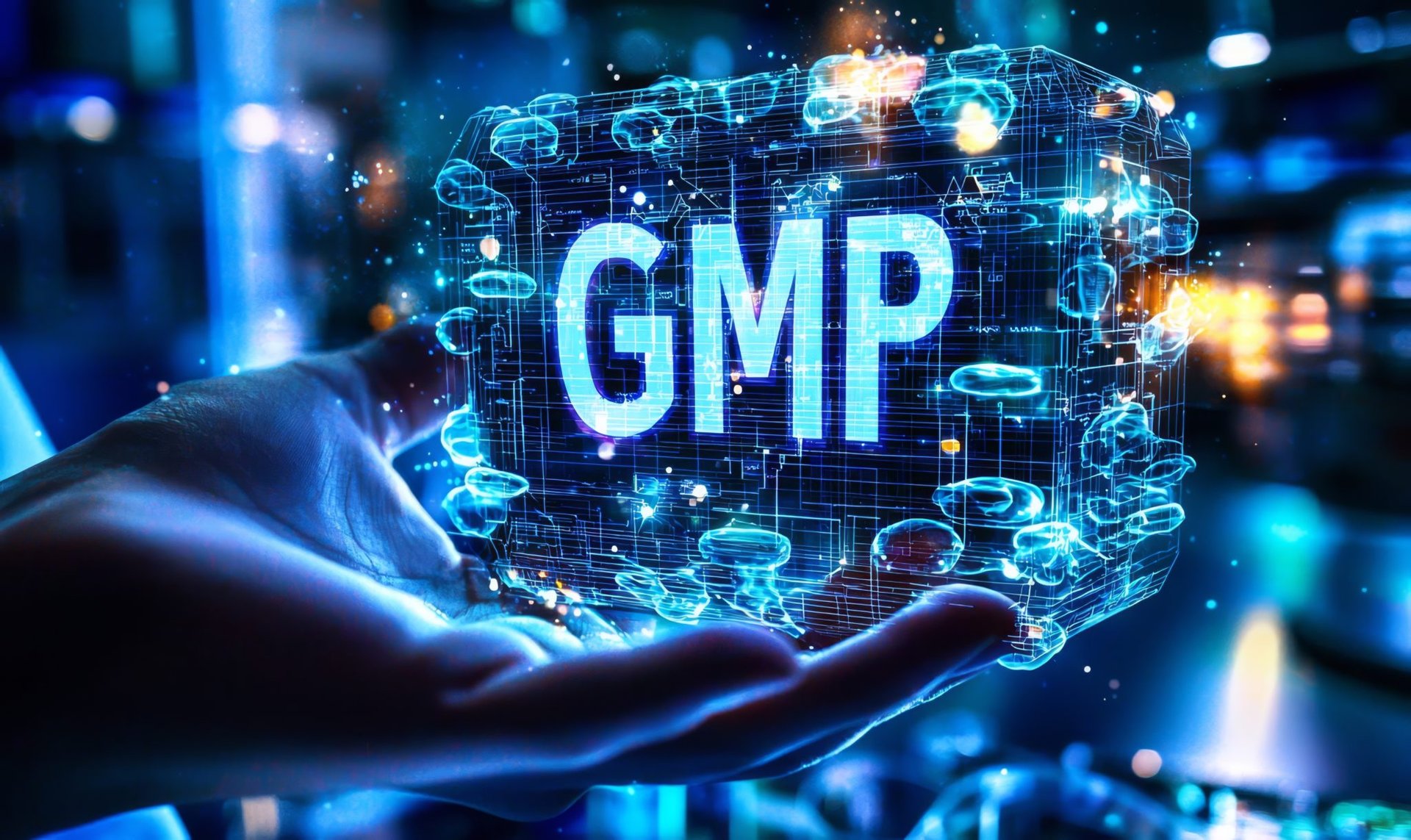The following article outlines the key changes introduced in Polish legislation regarding the amendment of the Regulation of the Minister of Health of 9 November 2015 on the requirements of Good Manufacturing Practice (GMP), updated by the latest amendment of 4 December 2024 (Journal of Laws 2024, item 1816). It also presents forecasts and major trends that may affect the pharmaceutical industry in 2025, highlighting the challenges faced by the sector.
Changes in regulations must be regularly monitored and implemented in companies, especially those operating under GxP principles. Neglecting this can lead to serious problems such as penalties, production shutdowns, or the loss of essential certifications, such as GMP. It is also crucial to ensure product quality and patient safety, which can be achieved by continuously monitoring regulatory changes.
The first change worth highlighting is the regulation signed by the Minister of Health on 12 August 2024, which introduces significant amendments to the provisions on Good Manufacturing Practice (GMP). The regulation, published in the Journal of Laws under item 1323, updates the provisions of the regulation dated 9 November 2015 to align them with EU law requirements, including:
- Regulation (EU) No 536/2014 of the European Parliament and of the Council on clinical trials on medicinal products for human use;
- Commission Delegated Regulation (EU) 2017/1569 supplementing provisions regarding Good Manufacturing Practice guidelines for investigational medicinal products.

New Annex No. 7:
The introduction of changes regarding the production of investigational medicinal products is another significant update. These changes stem from the need to align national regulations with the European Commission guidelines from 2017 concerning the production of medicinal products used in clinical trials. The applicable GMP rules aim to ensure high quality and protect clinical trial participants. Detailed requirements were introduced for manufacturing investigational products, including excipients.
Annex No. 21:
One of the key novelties is Annex No. 21 concerning the import of medicines. According to the European Commission guidelines, it outlines the rules for importing medicinal products, including those for human use, veterinary use, and investigational purposes. These changes aim to simplify import procedures and ensure better compliance with EU standards. The regulation also distinguishes between products imported for the EU market and those intended solely for export, allowing for more precise regulatory coverage.
For proceedings regarding manufacturers and importers of medicinal products initiated before the new regulations came into force, the previous provisions apply, but no later than until 31 January 2025.
Changes Concerning Medicinal Products Derived from Blood and Plasma:
An important update also includes revised regulations concerning the production of medicinal products derived from human blood or plasma. The amendment introduces the definition of a “Responsible Person,” who assumes part of the duties previously performed by the Qualified Person. This change aims to improve the management of responsibilities related to processing, storage, and transportation of plasma, as well as ensuring full traceability of products prior to fractionation. Additionally, the regulations include specific provisions for facilities handling blood and plasma, where responsibility can be transferred to the Responsible Person if appointing a Qualified Person is unnecessary.
Additional Amendments in Existing Annexes:
Annex No. 2 – Basic Good Manufacturing Practice Requirements:
- Requirements for sterile products were clarified.
- Provisions regarding the stability monitoring of bulk products were revised.
Annex No. 5 – Detailed Guidelines for Various Manufacturing Processes:
- Annex 3: Added requirements for radiopharmaceuticals intended for clinical trials.
- Annex 15: Adjusted requirements for process validation of investigational medicinal products.
- Annex 21: Introduced detailed provisions concerning the import of medicinal products.
Annex No. 6 – Good Manufacturing Practice for Advanced Therapy Medicinal Products:
- Updated manufacturing requirements for advanced therapy medicinal products, including hospital exemptions.
The above amendment came into force one month after its publication, i.e., on 2 October 2024.

Another change worth mentioning is a legal regulation introducing significant updates to GMP principles. The document (Journal of Laws 2024, item 1816) aligns national laws with EU standards, particularly concerning veterinary medicinal products, and clarifies provisions in Annex 1 regarding the manufacture of sterile drug forms.
Key Changes Introduced by the Regulation Include:
- Increased requirements for manufacturing sterile medicinal products, including those terminally sterilized and those prepared aseptically.
- Updated provisions regarding isolators.
- Introduction of automatic disinfection methods.
- Clarified the role of airlocks and barriers in contamination control.
- Refined contamination control principles, covering microbiological sources, endotoxins/pyrogens, and particulates.
- Clarified requirements for Contamination Control Strategy (CCS), which must be actively reviewed, updated, and lead to continuous improvement in manufacturing and control methods.
- Defined the role of risk management in developing and maintaining CCS to eliminate or minimize contamination risks.
- Detailed rules for cleanroom classification zones A and B, including unidirectional airflow requirements.
- Defined protective barrier (RABS) requirements, including disinfection, RTP (Rapid Transfer Port) systems, and door-opening restrictions.
- Specified drainage system rules, including the need for traps and water seals, as well as regular maintenance.
- Detailed the transport rules for materials and equipment, including unidirectional flow and contamination control.
- Defined waste removal procedures from zones A and B, including temporary separation options and mandatory control measures.
- Emphasized sterility and contamination-related testing.
- Clarified requirements for equipment undergoing sterilization: it must be dry, packaged using barrier systems, and verified post-sterilization for quality.
- Defined porous load sterilization procedures: parameter monitoring (time, temperature, pressure).
- Clarified sterilization validation requirements: monitoring key parameters and setting limits for routine cycles.
- Specified sterilizer leakage test requirements: periodic testing, especially in vacuum cycles.
- Defined steam-in-place (SIP) system requirements: design and validation with temperature and pressure monitoring, especially in cold spots.
- Clarified validation rules for liquid sterilization: include temperature mapping, heat penetration, and uniform heating of the load.
- Defined requirements for sterilization/depyrogenation tunnels: ensure proper airflow, HEPA filter integration, and biennial testing.
- Specified critical process parameters: conveyor speed, temperature, heat penetration, heat distribution, and airflow.
- Defined depyrogenation requirements: process must reduce endotoxin levels without requiring additional sterilization.
- Clarified rules for transporting materials to isolators: must not compromise the critical zone.
- Introduced/clarified water-for-injection purification methods.
- Increased air purity monitoring requirements in rooms.
- Removed investigational medicinal product requirements from Annex 1.
Separation of Veterinary and Human Medicinal Product Regulations:
- A new section was added to the regulation stating that general GMP requirements for veterinary medicinal products will be described in a new annex. Accordingly:
- §1 now includes a new item: “General Good Manufacturing Practice requirements for veterinary medicinal products.”
- A new Annex No. 1a was created, specifying requirements for veterinary medicinal products in detail.
Annex 13 – Manufacture of Investigational Veterinary Medicinal Products:
- The title was changed to: “Manufacture of Investigational Veterinary Medicinal Products.”
- New definitions and language adjustments were introduced:
- “Investigational medicinal products” now refers to “investigational veterinary medicinal products.”
- A new definition of “supplying” was added, covering packaging and dispatch of investigational products.
- A new definition of “trial participant” was introduced, referring to the animal subject of the study.
- In the terminology section:
- The phrase “with treated patients” was replaced with “with trial participants.”
- In the section on other investigational medicinal products: The phrase “to persons participating in the trials” was replaced with “to trial participants.”
- Unnecessary expressions were removed:
- In point 36, the phrase “for the patient” was deleted.
- In point 55, the term “patients” was replaced with the more precise “animals.”
This amendment entered into force on 18 December 2024.
Forecasts and Future Trends in Pharmaceutical Manufacturing:
Apart from recent regulatory changes in GMP, this article also discusses the anticipated directions and trends in pharmaceutical product manufacturing.
An essential element of the industry’s future will be the development of automation and digitalization.
The implementation of paperless solutions in documentation management will become a key component of digital transformation, improving efficiency, regulatory compliance, and data accessibility. Expected developments include:
- Centralization of documents, making access and compliance easier;
- Automation of document workflows, accelerating processes and reducing errors;
- Shortening of document life cycles thanks to real-time collaboration and e-signatures;
- Use of cloud-based data management systems;
- Increased security and protection of proprietary know-how through the implementation of paperless solutions.

Summary:
In 2024, Poland implemented significant changes in legal regulations related to Good Manufacturing Practice (GMP), aimed at aligning national requirements with European standards. These changes include new rules on the production of investigational drugs, importation of medicinal products, and the manufacture of drugs from blood and plasma. Additionally, regulations concerning veterinary and sterile products have been updated.
Looking ahead, the industry is expected to undergo further automation and digitalization, including the adoption of paperless modules in documentation management systems. These innovations are likely to significantly improve efficiency, regulatory compliance, and processes in the pharmaceutical sector. These changes are already being adopted by organizations, and in the coming years, such solutions are expected to become a standard among GxP-compliant companies.
It is important to remember that technological progress brings numerous benefits but also challenges and potential risks. Therefore, to ensure the availability, confidentiality, and integrity of data used by these systems (paperless modules), appropriate oversight and human validation are essential. Only through such measures can the effectiveness and safety of these innovative solutions be guaranteed, especially regarding product quality and patient safety.
Kamil Melson
Professional Validation Specialist

